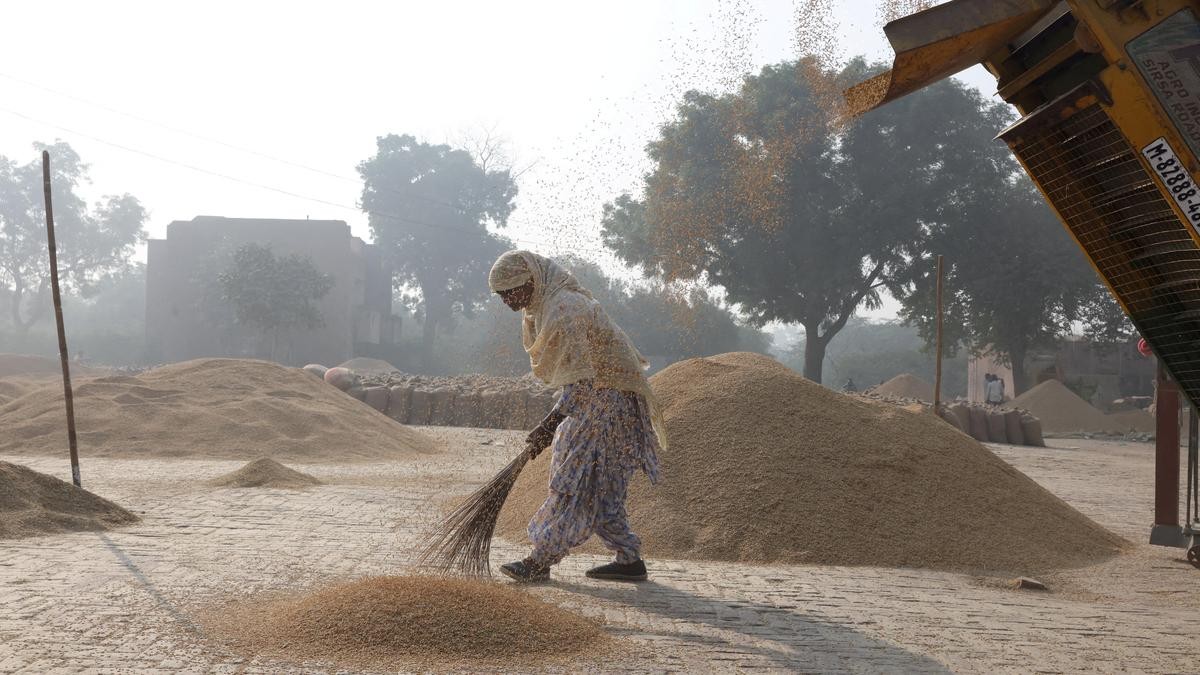Description

Copyright infringement not intended
Context: The Pension Fund Regulatory and Development Authority (PFRDA) working on a pension scheme that will offer minimum assured returns to subscribers. The scheme will require higher premium payments from subscribers who want higher returns, according to PFRDA Chairman.
Details
- PFRDA Chairman said that the PFRDA's assets under management have grown to Rs 9.4 lakh crore, but India's pension assets are still lagging behind many developed countries.
- He said that the PFRDA has about 5.3 crore subscribers under the Atal Pension Yojana (APY), which is a government-backed pension scheme for the unorganised sector. The target for this year is to enrol 1.3 crores more subscribers, compared to 1.2 crores last year.
- He said that he is a member of a panel headed by the Finance Secretary that is reviewing the pension system for government employees, but it is too early to comment on any proposals.
The Pension System in India
- The pension system in India consists of three main pillars:
- The Employees' Provident Fund (EPF), which covers formal sector workers.
- The National Pension System (NPS), covers public sector employees and voluntary subscribers.
- Various social security schemes, such as the Indira Gandhi National Old Age Pension Scheme (IGNOAPS), cover informal sector workers and poor households.
- The EPF is a mandatory defined contribution scheme that provides lump-sum benefits at retirement or withdrawal.
- The NPS is a voluntary defined contribution scheme that offers annuity or lump-sum benefits at retirement.
- Social security schemes are non-contributory schemes that provide monthly cash transfers to eligible beneficiaries.
.jpeg)
The pension system in India suffers from several problems that limit its effectiveness and inclusiveness. Some of these problems are:
Low coverage
- According to the World Bank, only about 24% of the working-age population in India is covered by any form of pension or social security scheme. This means that more than 300 million workers, mostly in the informal sector, have no access to any form of old-age income support. For example, a recent study by Agarwal et al. (2020) found that only 13% of informal sector workers in urban areas and 7% in rural areas were enrolled in any pension scheme.
Inadequate benefits
- The benefits provided by the pension schemes are often insufficient to meet the basic needs of the elderly. For example, the IGNOAPS provides only Rs. 200 per month to beneficiaries aged 60-79 years and Rs. 500 per month to those aged 80 years and above. This amounts to less than 10% of the poverty line for rural areas and less than 5% for urban areas.
- The average monthly benefit from the EPF is about Rs. 4,500, which is below the minimum wage in many states. The NPS has a low annuitization rate of only 40%, which means that most subscribers opt for lump-sum withdrawals rather than regular income streams.
Fiscal constraints
- The pension system in India imposes a significant financial burden on the government, especially at the state level. The social security schemes alone account for about 0.4% of GDP in public expenditure.
- The EPF also faces a funding gap due to low returns on investments and high administrative costs.
- The NPS has a relatively low fiscal cost, but it depends on the fiscal capacity of the government to provide matching contributions and tax incentives to subscribers. For instance, Chakraborty et al. (2019) estimated that the fiscal cost of providing matching contributions to all NPS subscribers would be about 0.2% of GDP by 2031-32.
Governance issues
- The pension system in India suffers from poor governance and service delivery, which affect its efficiency and transparency. There are multiple agencies involved in administering and regulating the pension schemes, leading to duplication of functions and lack of coordination.
- There are also issues of corruption, fraud, leakage, and exclusion in the implementation of social security schemes.
- The EPF and NPS face challenges in ensuring compliance, portability, and interoperability among different segments of subscribers. For example, a 2018 report highlighted that only 15% of EPF accounts were linked with Aadhaar, a unique identification number issued by the government.

To address these challenges and ensure a sustainable and inclusive pension system for its citizens, India needs to undertake a comprehensive pension reform that involves:
Expanding coverage
- India needs to expand the coverage of its pension system to include all workers, especially those in the informal sector and rural areas. This can be done by simplifying the enrollment process, reducing the contribution rates, providing subsidies or matching contributions, creating awareness and financial literacy, and leveraging technology and digital platforms. For example, the government can launch a universal pension scheme that covers all workers with a minimum contribution, matched by the government, and provides a minimum pension at retirement.
Enhancing benefits
- India needs to enhance the benefits provided by its pension system to ensure adequate income security for the elderly. This can be done by increasing the minimum pension amount, indexing it to inflation or wages, diversifying the investment portfolio, increasing the annuitization rate, and providing more flexibility and choice to subscribers. For example, the government can increase the IGNOAPS amount to Rs. 500 per month for all beneficiaries and link it to the consumer price index.
- The EPF and NPS can invest more in equity and other alternative assets to generate higher returns. The NPS can also increase the annuitization rate to 60% and offer more annuity options to subscribers
Reducing fiscal costs
- India needs to reduce the fiscal costs of its pension system to ensure its long-term viability and sustainability. This can be done by rationalizing and consolidating the social security schemes, improving their targeting and delivery mechanisms, increasing the returns on investments, reducing administrative costs, and strengthening the regulatory framework. For example, the government can merge the various social security schemes into a single scheme with uniform eligibility criteria and benefit levels.
- The EPF and NPS can adopt a more efficient and transparent fund management system with lower fees and charges. The government can also establish an independent pension regulator to oversee and monitor the performance of the pension schemes.
Improving governance
- India needs to improve the governance and service delivery of its pension system to enhance its efficiency and transparency. This can be done by streamlining and integrating the institutional arrangements, strengthening the oversight and accountability mechanisms, leveraging technology and data analytics, and enhancing the participation and feedback of stakeholders. For example, the government can create a single nodal agency for administering and regulating all pension schemes.
- The EPF and NPS can use Aadhaar and other digital platforms to facilitate compliance, portability, and interoperability. The government can also use biometric authentication, direct benefit transfer, and grievance redressal systems to improve the delivery of social security schemes.
By implementing these reforms, India can create a pension system that is sustainable, inclusive, and responsive to the needs and preferences of its citizens. Such a system can also contribute to the economic and social development of the country by promoting savings, investment, consumption, and human capital formation.
Must Read Articles:
Pension Fund Regulatory & Development Authority (PFRDA): https://www.iasgyan.in/daily-current-affairs/pfrda
Atal Pension Yojana (APY): https://www.iasgyan.in/daily-current-affairs/social-security-schemes-in-news
|
PRACTICE QUESTION
Q. Pension is a vital source of income for the elderly population in India, especially in the context of rising life expectancy and changing family structures. However, the pension system in India faces many challenges, such as low coverage, inadequate benefits, fiscal constraints, and governance issues. How can India address these challenges and ensure a sustainable and inclusive pension system for its citizens?
|
https://indianexpress.com/article/business/pension-scheme-with-minimum-assured-returns-in-the-works-pfrda-8651318/












